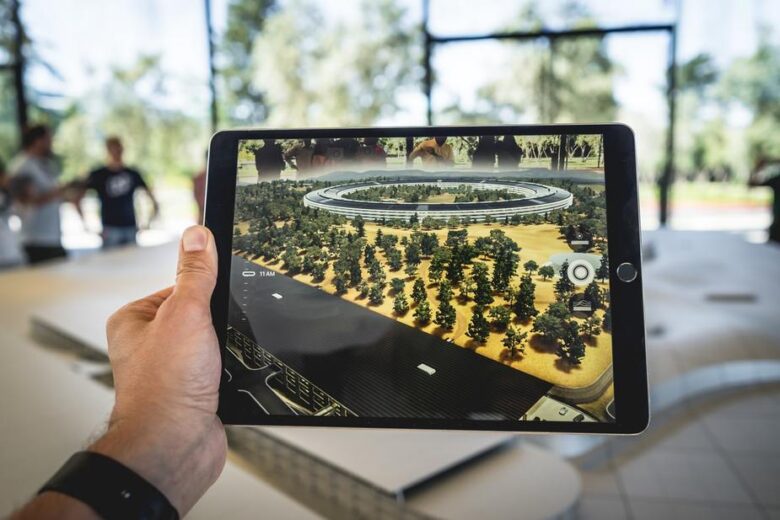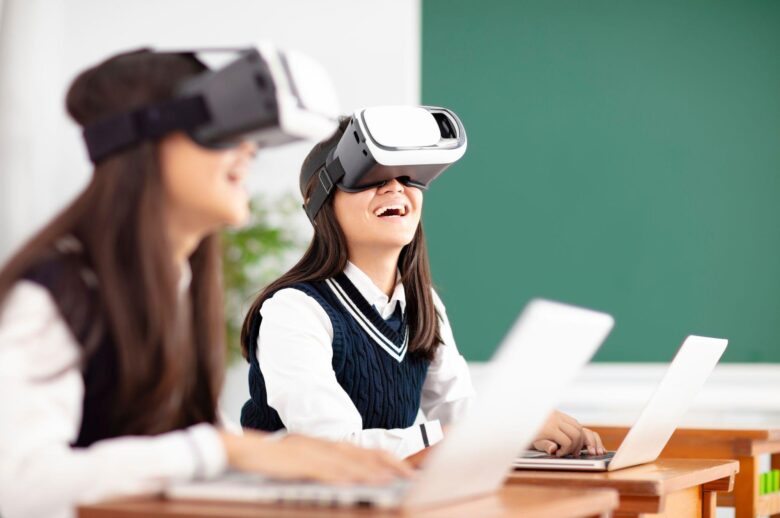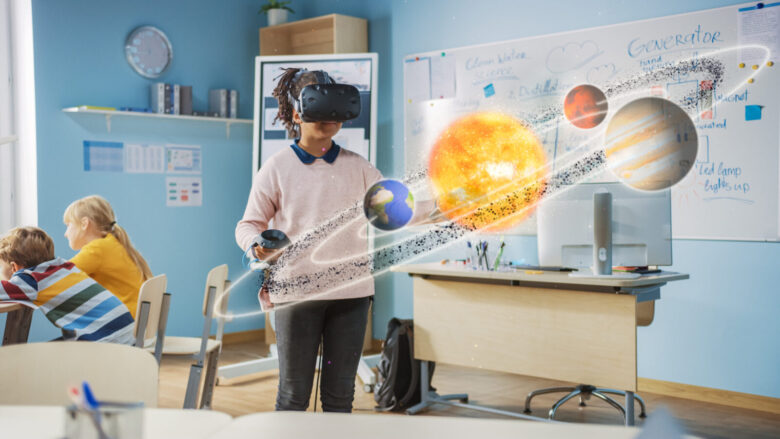There have been a lot of drastic changes in the education sector in the past decade. The typical education model, which has been used for years, has slowly been fading away. It has been replaced with an upgraded, modern, and technologically advanced one. This is thanks to the innovation in the EdTech domain and numerous innovative tools and technologies that we get to use today.
Augmented Reality (AR) in the classroom is one of the innovations we’re lucky enough to have today. Teachers and students are seeing tons of benefits for including this technology in the education experience. To help you understand the value and potential power of AR in education, we’ve listed the best practices of how to apply it.
What is Augmented Reality?
Let’s start by briefly explaining what AR is. This type of technology combines digital elements and the real world by blending them together.
Simply put, we can change and manipulate how we see our environment and the physical world around us by overlaying digital content like images, videos, and sounds onto it.
Here’s a typical example. You want to buy a new sofa but aren’t sure how it would fit your living room. Using your smartphone camera, you point to the place where the sofa would go, and it appears on the screen right in your living room.
Another example is students doing research for an essay or a paper about a historical sight they can’t visit in real life. Using AR, they could have a virtual tour of the place and write the essay far better and with less struggle. If you struggle with essay writing, GrabMyEssay.com is a great resource for any kind of academic writing. The experts will complete a custom essay for you on any topic.
How to Best Use AR in Education?

Let’s find out the other benefits of using AR in the classroom. There are dozens of ways to use AR in education, whether it’s in schools, courses, workshops, training programs, and more. Still, some practices are turning out to be more powerful in terms of student engagement, memorizing the facts, enhancing interactivity, boosting creativity, and more. Research shows that 72% of students claim they are more eager to participate in a class that has AR involved.
Below, we’ll break down the best practices for using AR in education that serve the teachers, instructors, and students.
1. Visualizing Complex Concepts
Visualization is extremely helpful when students are trying to understand and learn about complex concepts. Unfortunately, textbook images and simple videos sometimes don’t do the trick, and AR can create a much more powerful experience for them.
Chemistry, physics, geometry, and other similar fields are often packed with concepts we know nothing about and find very hard to imagine. But AR can help us with:
- 3D models
- manipulation of digital objects
- simulations
For instance, students can see a 3D model of a prism, manipulate it, explore it from different angles, and thus understand better how to treat it in their calculations.
2. Virtual Field Trips

Are you trying to teach students about the pyramids in Egypt? Or are you talking about rainforests? Are you teaching them about the solar system and the planets? You may be covering a historical site that no longer exists in the form you’re learning about.
Virtual reality today allows you to take your students on virtual field trips and experience all these places from their own perspective without leaving the classroom.
There’s no question that there are numerous benefits of such as:
- improved student focus
- more interest to participate
- ease of comprehension
Plus, teachers find teaching much easier using such realistic, clear, and unambiguous tools.
3. AR Textbooks
We know that we still can’t imagine school without books, but AR has also found its way into textbooks used for classes. Today, we have AR textbooks that have another dimension that can be triggered with the help of our smart devices.
By watching the pages of the book through a camera, students get 2D and 3D models and representations of the content from the page. This way, students learning about a new continent in Geography class can unlock 3D interactive maps showing all the details they need.
AR textbooks are being used in all levels of education, from pre-K to college.
4. Practical Skills

AR can help those students who need practical experience gain it while still in the classroom. Preparing the students for the real world is important, and with the help of AR, they get to improve their skills through actual practice.
This method is often applied in:
- medicine, for practicing medical procedures
- physics, for performing experiments
- anatomy, for exploring the human body
- aviation, for pilot training
- mechanical training, for practicing vehicle repairing
The applications are endless, and students who have the chance to go through such practical training are more confident when applying those skills in real life.
5. Design Visualization
AR can be used to make the design education process more successful and help the student designers reach a result they’re entirely happy with. While working on a design, they can use AR to visualize their work in real life and observe it from a more realistic point of view.
This can help them make the right changes and adjustments and feel more confident in what they’re doing.
This can be used in architecture, interior design, fashion design, product design, graphic design, and more. An interior design student can see their work overlayed the physical space they’re working on and make better decisions on how to proceed.
Final Thoughts
Augmented Reality is a truly powerful tool when placed in the hands of well-informed, innovative, and motivated educators. Students who can use AR on their education journey find it easier to stay focused in class, understand the subject matter, and nurture their interests.
The practices of using AR in education that we’ve listed above are just the tip of the iceberg. Hopefully, we’ve inspired you to keep reading about the application of AR in education and start using it for your educational purposes.

